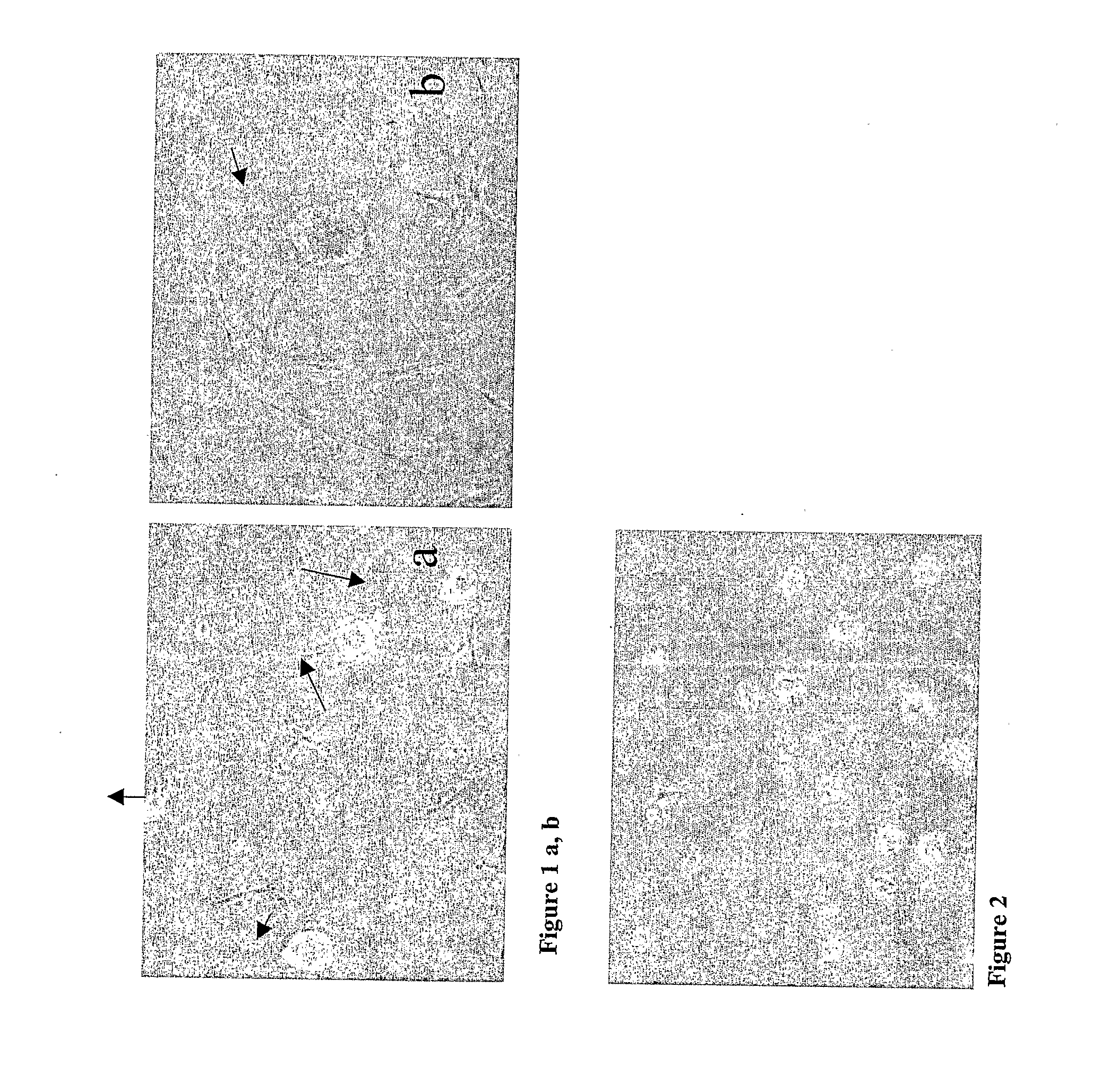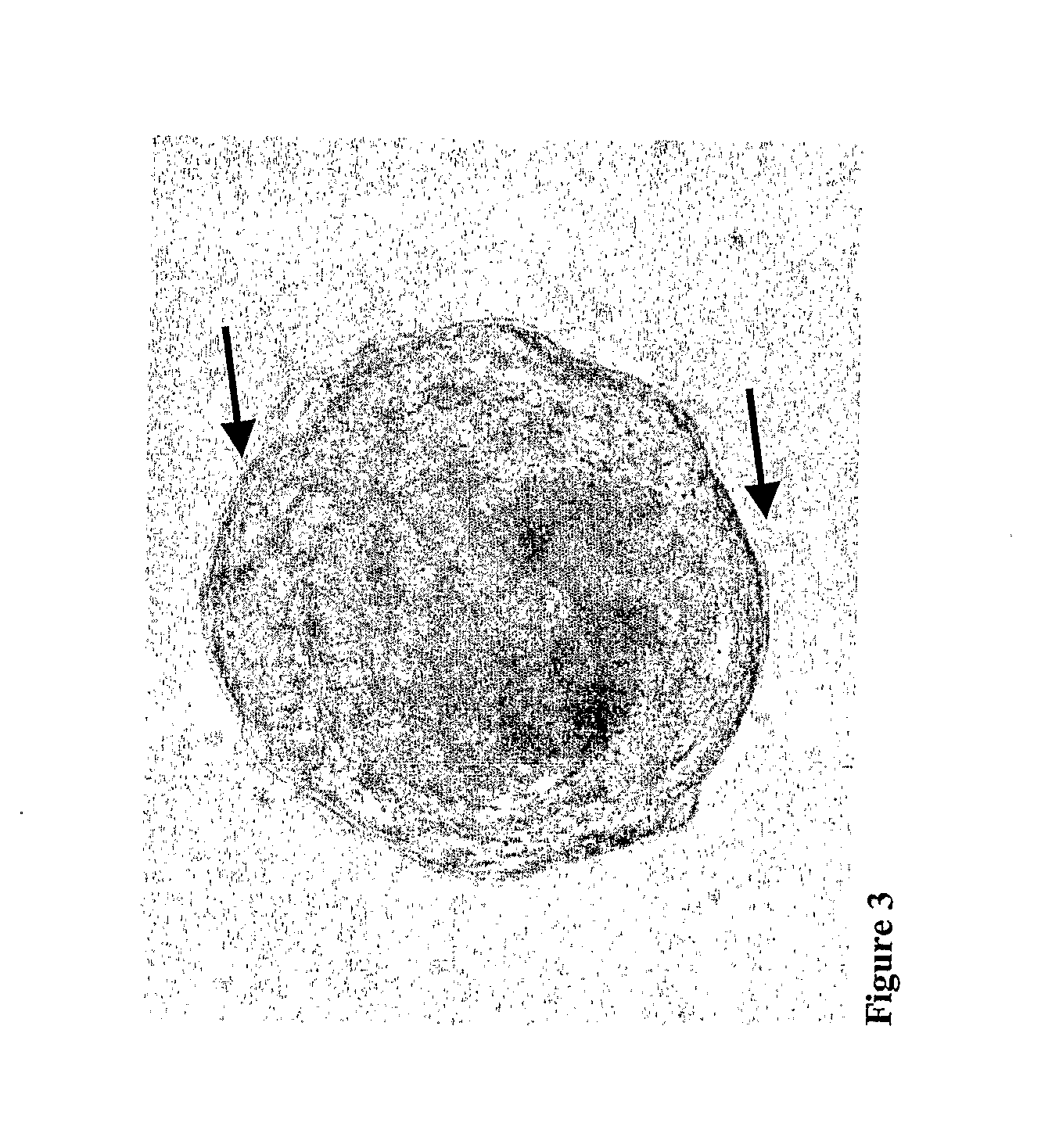Neural Stem Cells
- Summary
- Abstract
- Description
- Claims
- Application Information
AI Technical Summary
Benefits of technology
Problems solved by technology
Method used
Image
Examples
Embodiment Construction
[0044]Cells were enzymatically isolated from dissected soft tissue of wisdom teeth (dental follicle or apical soft tissue) by collagenase / Dispase treatment.
[0045]The ectomesenchymal cells were cultivated in FCS containing medium for 8-12 days. Some of the cells adhered to the plastic culture flask while some died in suspension. However, some of the cells formed spheres (FIG. 1).
[0046]The floating spheres were transferred to new culture flasks after initial culturing in bFGF (40 ng / ml) and EGF (20 ng / ml), B27 (1:50) and neurobasal medium (Invitrogen) containing medium or bFGF (50 ng / ml), EGF (25 ng / ml), ITS+Premix (1:50) and DMEM High glucose containing medium. Cells in spheres proliferated thereby forming large spheres which were successfully passaged and expanded (FIG. 2). The spheres seemed bright when viewed under a phase contrast microscope and showed cytoplasmic protrusions (cilia) at their surface (FIG. 3).
[0047]The primary spheres were mechanically dissociated into single cel...
PUM
 Login to View More
Login to View More Abstract
Description
Claims
Application Information
 Login to View More
Login to View More - R&D
- Intellectual Property
- Life Sciences
- Materials
- Tech Scout
- Unparalleled Data Quality
- Higher Quality Content
- 60% Fewer Hallucinations
Browse by: Latest US Patents, China's latest patents, Technical Efficacy Thesaurus, Application Domain, Technology Topic, Popular Technical Reports.
© 2025 PatSnap. All rights reserved.Legal|Privacy policy|Modern Slavery Act Transparency Statement|Sitemap|About US| Contact US: help@patsnap.com



